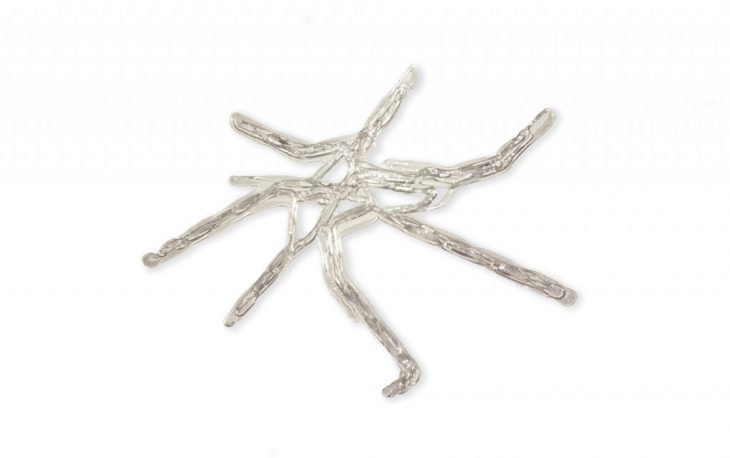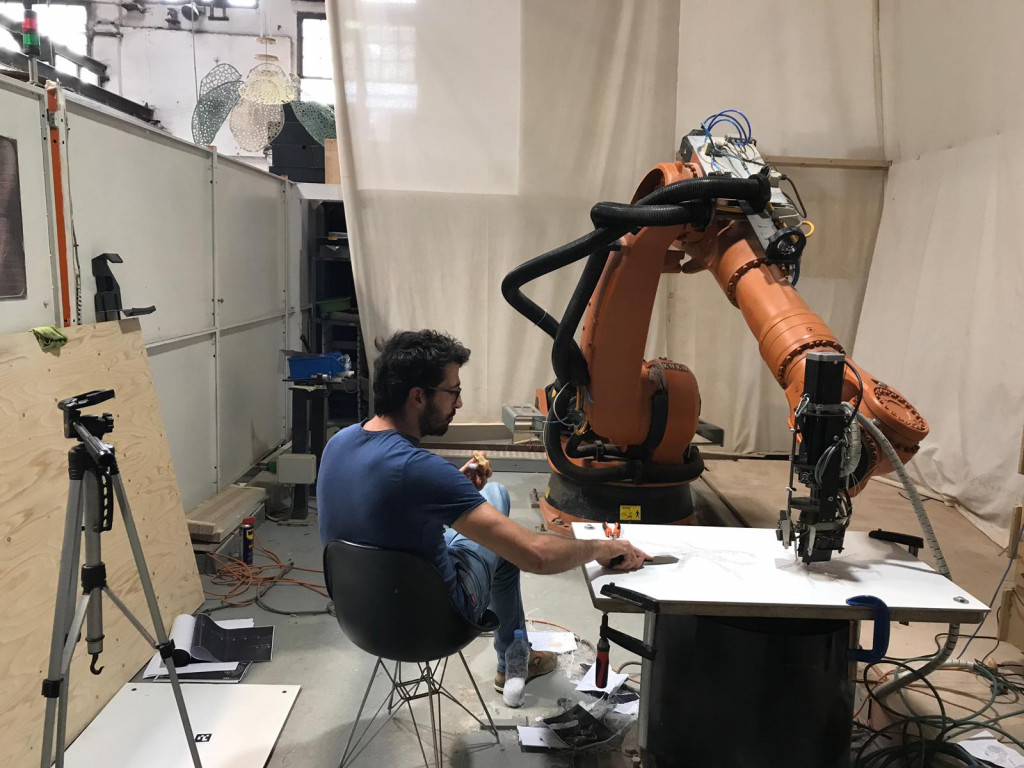CONTEXT
The workshop was about the connection between real-time fabricating robotics, argumented reality for assembly, reinforcement of structures and agent-based self-organising structures.
TEAM FABRICATION
Keytasks for the fabrication team was to print the all the generated structure pieces.
Keychallenge was to find the right values for printing with a Pelletextruder from WASP for PETG, such as flowrate of the material, extrusion temperature and printing speed. The transparent PETG-pieces should have the best visual properties, a constant width and layerheight and an acceptable fabrication time.

PRINTING WITH UDP SOCKET COMMUNICATION ON KUKA IIWA
It was planned to fabricate all pieces on a Kuka iiwa through UDB communication for a faster fabrication between path-generation and robotic movement. The UDP communication worked but the main problem was that UDP is just working for a certain amount of points to send to the robot . In the case of the robot we decreased the curvepoints of the structure, which should be printed in 3 layers, step by step down. But in the end the only feasable possibilty seemed to be the division of the whole digital structure in many partcurves to get the right working amount of points to send. But through this we created the next problem. We wanted to send the points of the partcurves after each other till the whole structure is printed. In this case we had issues with the buffer-zone. While one script was running we couldnt send the next step because the robot would run in the same moment the new script instead of runnung the scripts after each other. We tried a couple of things like a timer in grasshopper or manual sending when the last point of the previous part was reached.
Another tiny but interesting problem was the motion of the kuka iiwa. We figured out, while printing the structure, that the printing nozzle was very instable in the movement of printing also with decreased speed . So a perfect printing path was not possible because of instable robot movements in a range of a ouple of millimeters. The reason could be that the kuka iiwa with his control is based on automation not on motion. So the iiwa has a s´fantastic repeatability in reaching the same point again and again but in terms of movement on a giving point-path the iiwa can`t perfectly follow.
Because of much lost time in finding solutions for the fabrication issues we made the decision to give the iiwa to the reinforcemt team and move with the pelletextruder to the kuka KR150 to finish the production. We had to got the standard way to generate all the printing files before to save them directly via pendrive in the robot directories to produce each piece.
PRINTING WITH KUKA KR150
The next issues we had to tackle where to find the right printing values between robot speed, flowrate, printing temperature and cooling. After a while we found not a perfect but a working solution to continue the fabrication. Main issue was that PETG is creating airbubbles when the material is not dry enough.

CONCLUSION
The direct communication between pathgeneration and robotic movement is a good improvement for a faster production and an important tool in sense of path correction. But probably more advanced tools then UDP will be a better choice for a real buisness case. In case of 3D-printing the right tool and the right material according to the needs of the project are mandatory . A sensor feedback could also be a big advantage to detect and correct over or under-extrusion or other possible problems occur in 3D-printing.
___________________________________________________________________________________________
Workshop 3A | MRAC 2018-2019
Faculty: Roland Snooks
Faculty assistants: Natalie Alima | Kunaljit Chadha
Student: Sebastian Voigt